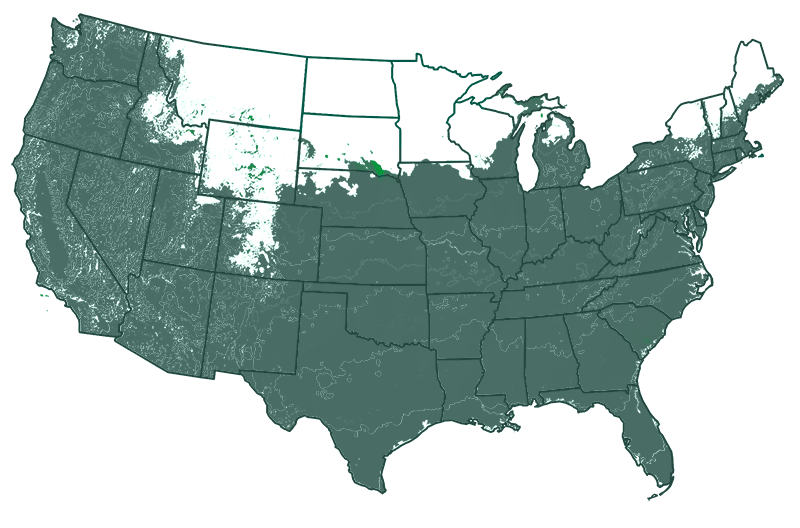



Fignomenal Fig
View More Planting Info
If you’re planting in containers, choose a pot about twice the width of the current container. It should have several drainage holes to prevent waterlogging and potential root rot. Outdoors in warmer climates, choose a location with full sun and rich, well-draining soil. They can grow in partial sun, but won’t produce as well. Dig a hole twice as wide and the same depth as the root ball. Place the tree in the hole, ensuring it's straight, and backfill with soil, tamping down gently to remove air pockets. Water thoroughly to settle the soil around the roots. Apply a layer of mulch around the base of the tree.
Harvesting:
Harvest when figs change color and the skin softens slightly. Remove only when you’re ready to eat them.
Pruning:
Trim damaged or diseased leaves, and to direct the plant's energy toward new and healthy growth.
Growth:
Fignomenal Fig grows to 2 to 3 feet. Plant at least 5 feet from other plants.
- Product Info
- Care and Maintenance
- Planting Care
- Growing Zone
Product Info
Mature Height: 28 in.
Mature Width: 5 ft.
Sunlight: Full-Part Sun
Growth Rate: Moderate
Does Not Ship To: AZ, OR
Care and Maintenance
Watering: Water around once or twice per week after planting as soon as the first few inches of soil dries out. These trees are considered drought-tolerant once established, but consistent moisture in the soil will stop the fruits from splitting. Water more frequently in containers as the soil dries out quicker.
Fertilizing: Apply a slow-release fertilizer once per season in spring and summer to boost growth. For potted plants, use a half-strength fertilizer every 6-8 weeks to combat leaching in containers. Always follow the instructions on the packaging and never feed more than recommended.
Pruning: Prune in late winter while the tree is dormant. Remove damaged or diseased branches to promote healthy growth. Don’t remove too much of the leafy growth at one time.
Pests and Diseases: Figs aren’t majorly prone to pest and disease issues. Keep an eye out for leaf spot, rust, and anthracnose, along with pests like nematodes, scale insects, and mites.
Pollination: Fignomenal Figs are self-pollinating, but you can encourage better fruit production by planting more than one fig tree if space allows. This can increase pollination rates through cross-pollination.
Harvesting: Harvest when the fruits change color and the skin softens slightly. Gently twist the fig off the branch or use pruning shears to cut the stem close to the fruit. Harvest in the morning if possible and consume fresh figs quickly, as they spoil within 7-10 days even when refrigerated.
Recovery Time: Transitioning from our nursery to your home can be a bit of a shock to your plant. A short acclimation period helps it recover and reduces stress.
Climate Adjustment: Every environment is unique. Giving your plant time to adjust to the local climate, humidity, and light conditions in a shady spot will set it up for better growth and health.
How to Acclimate Your Plant: Keep the plant in its container and place it in a shady, sheltered area away from high winds. Ensure it's watered adequately – the soil should be moist but not waterlogged. Monitor the plant for any signs of distress and allow it to adjust for a few days before planting. After a few days of acclimation, your plant will be better prepared to thrive in its new home for years to come.
Planting Care
Sunlight: Plant in full sun, providing at least 6 hours of light per day. They can tolerate partial sun, but this will reduce yield.
Soil: Plant in well-draining soil with a slightly acidic pH.
Mature size: These compact trees reach a maximum height of 28 inches.
Climate: Fignomenal Figs prefer moderate climates. They can grow anywhere in containers but require warmer conditions to grow outdoors without protection.
Thinning: Remove damaged or diseased foliage to improve growth.
Location: Plant in a full sun position in well-draining soil or plant in containers.
Watering: Water around once per week or slightly more often in containers. Inconsistent watering will cause the fruits to split.
Pruning: Trim damaged or diseased leaves to direct the plant's energy toward new and healthy growth.
Spacing: Plant at least 5 feet away from any other trees or nearby structures in your garden when in the ground.
Harvesting: Harvest when the fruits change color and the skin softens slightly. Only harvest when you’re ready to eat as they spoil within 7-10 days even when refrigerated.
Pollination: Fignomenal Figs are self-pollinating, but it is best to plant another species for cross-pollination to increase fruit set.
Hardiness Zone: Fignomenal Fig Trees are suitable for planting outdoors in USDA Zones 5-10.
Fertilizer: Feed potted plants every 6-8 weeks during the growing season with a half-strength balanced fertilizer. Trees in the ground will benefit from a slow-release fertilizer once per season in spring and summer.
Growing Zone
Grows Well In Zones: 5-10 outdoors






